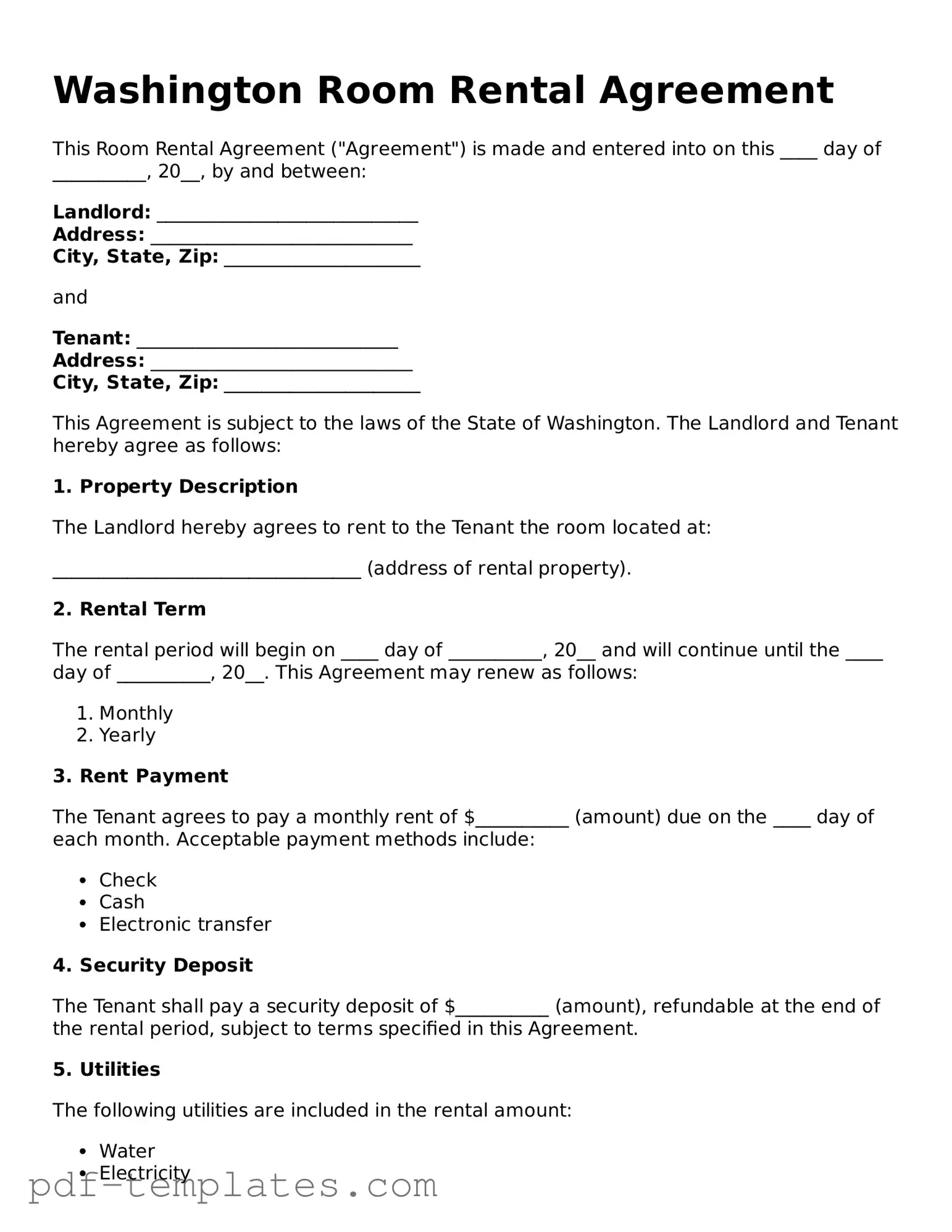The Washington Room Rental Agreement form is similar to a Lease Agreement. Both documents outline the terms under which a property can be rented. They detail the responsibilities of the landlord and tenant, including payment terms, duration of the rental, and maintenance obligations. While a Lease Agreement is often for a longer term, the principles of rental and occupancy rights are consistent across both documents.
When navigating the complexities of rental agreements, it is crucial to be aware of the necessary documentation, such as the USCIS I-9 form, which verifies the identity and employment authorization of individuals in the workforce. For more information on the form, you can visit documentonline.org/blank-uscis-i-9. This understanding aids in ensuring that all parties involved in rental agreements are compliant with legal requirements and clear on their responsibilities.
Another similar document is the Rental Application. This form is typically completed by prospective tenants before entering into a rental agreement. It collects essential information about the applicant, such as employment history and creditworthiness. While the Rental Application does not govern the rental terms, it plays a crucial role in determining eligibility for the rental agreement.
The Sublease Agreement is also comparable. When a tenant wishes to rent out a portion of their rented space to another party, a Sublease Agreement is created. This document outlines the terms under which the subtenant can occupy the space, mirroring the original rental agreement's structure and conditions. Both agreements ensure that the rights and responsibilities are clearly defined.
A Roommate Agreement shares similarities as well. This document is used when multiple tenants share a rental space. It specifies each roommate's responsibilities regarding rent, utilities, and common areas. Like the Room Rental Agreement, it aims to prevent misunderstandings and ensure a harmonious living arrangement.
The Commercial Lease Agreement is another related document. This agreement is used for renting commercial properties rather than residential ones. It includes terms about the use of the space, rent payments, and maintenance responsibilities. While the context differs, both agreements serve to protect the interests of the parties involved.
Finally, the Rental Receipt is akin to the Room Rental Agreement in that it documents transactions between the landlord and tenant. This receipt confirms that rent has been paid and can be used for record-keeping. While it does not contain the terms of the rental, it serves as proof of compliance with the financial obligations outlined in the rental agreement.
